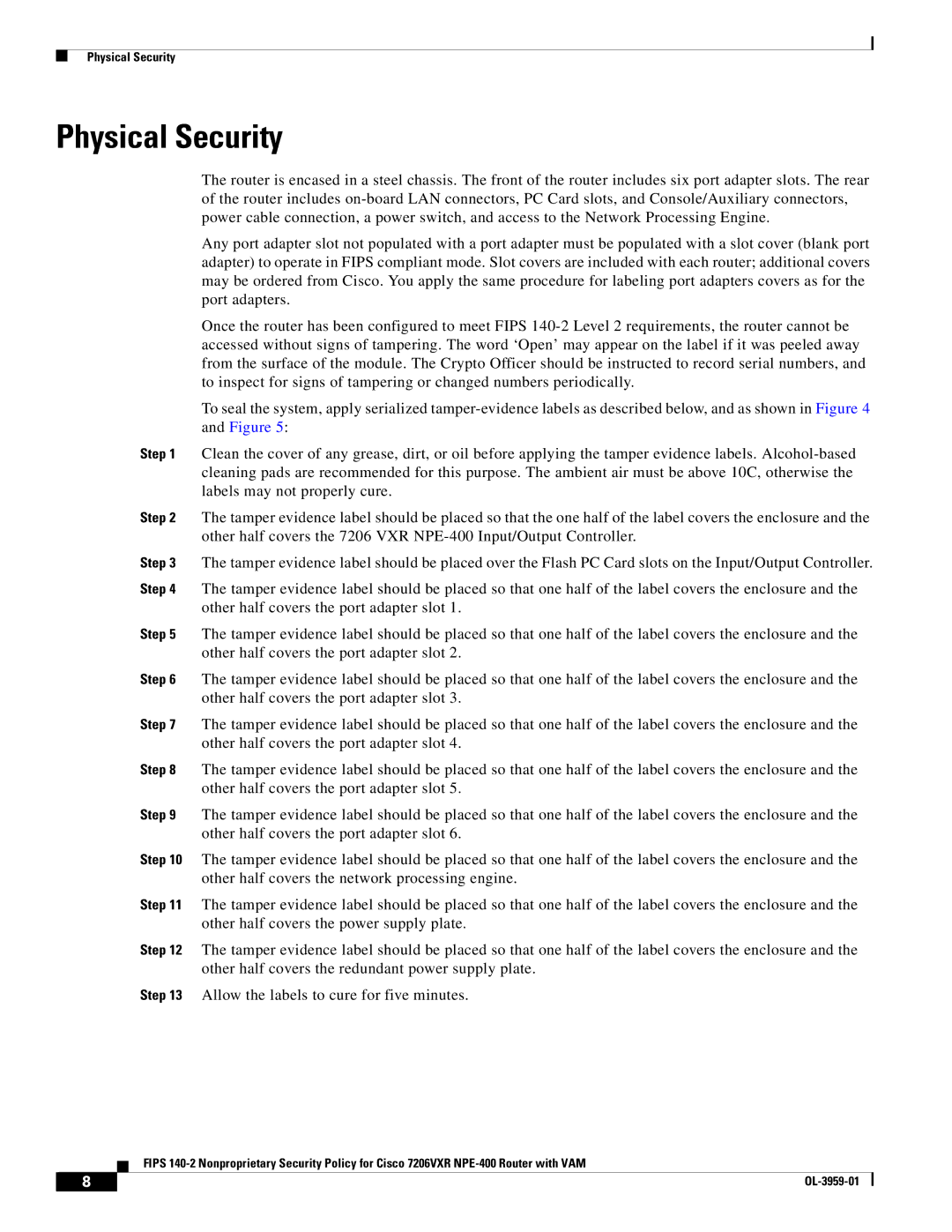
Physical Security
Physical Security
The router is encased in a steel chassis. The front of the router includes six port adapter slots. The rear of the router includes
Any port adapter slot not populated with a port adapter must be populated with a slot cover (blank port adapter) to operate in FIPS compliant mode. Slot covers are included with each router; additional covers may be ordered from Cisco. You apply the same procedure for labeling port adapters covers as for the port adapters.
Once the router has been configured to meet FIPS
To seal the system, apply serialized
Step 1 Clean the cover of any grease, dirt, or oil before applying the tamper evidence labels.
Step 2 The tamper evidence label should be placed so that the one half of the label covers the enclosure and the other half covers the 7206 VXR
Step 3 The tamper evidence label should be placed over the Flash PC Card slots on the Input/Output Controller.
Step 4 The tamper evidence label should be placed so that one half of the label covers the enclosure and the other half covers the port adapter slot 1.
Step 5 The tamper evidence label should be placed so that one half of the label covers the enclosure and the other half covers the port adapter slot 2.
Step 6 The tamper evidence label should be placed so that one half of the label covers the enclosure and the other half covers the port adapter slot 3.
Step 7 The tamper evidence label should be placed so that one half of the label covers the enclosure and the other half covers the port adapter slot 4.
Step 8 The tamper evidence label should be placed so that one half of the label covers the enclosure and the other half covers the port adapter slot 5.
Step 9 The tamper evidence label should be placed so that one half of the label covers the enclosure and the other half covers the port adapter slot 6.
Step 10 The tamper evidence label should be placed so that one half of the label covers the enclosure and the other half covers the network processing engine.
Step 11 The tamper evidence label should be placed so that one half of the label covers the enclosure and the other half covers the power supply plate.
Step 12 The tamper evidence label should be placed so that one half of the label covers the enclosure and the other half covers the redundant power supply plate.
Step 13 Allow the labels to cure for five minutes.
FIPS
8 |
| |
|
